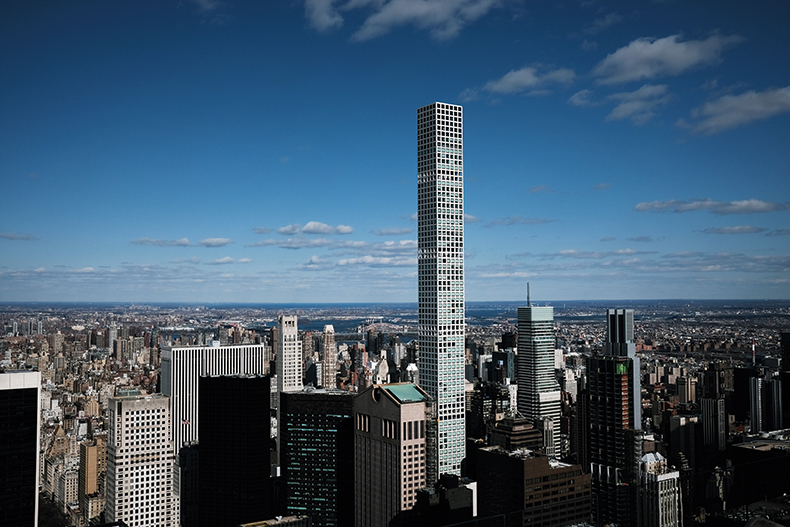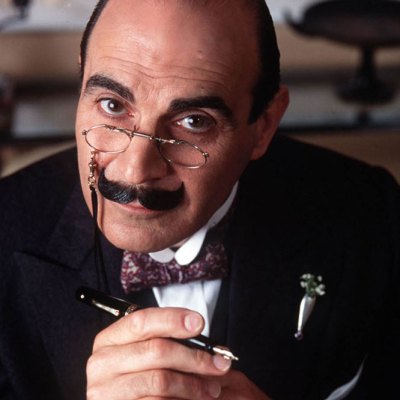From the June 2022 issue of Apollo. Preview and subscribe here.
New York has a problem. A swarm of super-tall developments, many of them exclusively dedicated to luxury apartments, has appeared on the city’s skyline in recent years and, if its growth is not abated, risks ruining it. The change has been rapid. After the terrorist attacks of 9/11, the 443-metre-high Empire State Building became the city’s tallest building once more. This remained true until 2012, when it was overtaken by One World Trade Center’s replacement. Now, however, it is only seventh tallest building in New York, with its position in the skyscraper league tables seemingly dropping ever lower every year.
It seems typical of New York that a building that rose upon the crushed remains of what was once the city’s most glamorous hotel, the Waldorf Astoria, should be dwarfed by a series of even bigger mega-structures. However the Empire State Building deserves not to be put in the shade – and the buildings by which it is being overtaken are the result of a corporate rapaciousness that would make even the construction barons of the 1920s and ’30s blush. The sleek Deco lines, stepped facade, and airship docking station at its summit (now just a platform for a still taller broadcasting antenna) all lent a sense of style to its slab-like form. They are the hallmarks of an age in which the future was genuinely exciting, a reminder that people once dreamed of walking around the city on high walkways built into skyscrapers, safe from the traffic below.
Today’s super-tall buildings, however, communicate only the desire to squeeze as much money as possible out of single plot of land. These are the ‘pencil towers’ that have risen up over the city like the spines of a sea creature. So called because they rise to a height totally incommensurate with the tiny ground footprints they occupy, they express a mine-is-bigger-than-yours aesthetic in its crudest possible terms. Buildings such as the Empire State were the product of zoning laws that came into force in New York in 1916 after the construction of the monolithic Equitable Building the year before; buildings were now required to step back after a certain height to allow light to reach distant street below. Today’s towers, statements of the developer’s soulless aesthetic writ huge, find their form by pushing planning laws to their limit and contravening their spirit in the process.
432 Park Avenue, designed by Rafael Viñoly Architects and completed in late 2015, has been nicknamed ‘the middle finger’. Photo: Spencer Platt/Getty Images

At 472 metres high, Central Park Tower is one of the eight super-tall buildings at the southern end of Central Park known as Billionaires’ Row. The developer Extell achieved its height by slowly acquiring and then agglomerating the lucrative ‘air rights’ – the right to build upwards into the sky – of neighbouring buildings between 2006 and 2012. This process also explains its strange shape as designed by Adrian Smith and Gordon Gill Architecture: a series of rectangular masses stacked on top of each other, seemingly at random. The form is dictated by the need for the building to cantilever over plots whose air rights the developer had acquired. Planning law was also used creatively by Rafael Viñoly Architects at 432 Park Avenue. Completed in late 2015, this was the first of the ‘pencil towers’ to be built. It encapsulates the aesthetic by obsessively and monotonously repeating a single idea – that of a concrete grid – for the whole of its 426 metres. An additional boost to its height comes in the form of the several empty voids along the shaft. These are known as mechanical zones, which contain much of the equipment required for the spindly erection to stand so tall. Critics allege, however, that these mechanical zones are unnecessarily large, making use of a loophole in the planning regulations that imposes no limit to the amount of square footage that they occupy. This greedy spirit has owned it the local nickname of the ‘middle finger’. Recently, Viñoly Architects were hoping to pull off this trick again at 249 East 62nd Street, by elevating the top half of the building, lamppost-like, atop an enormous ‘mechanical zone’, although the design has since been superseded.
Buildings so tall and narrow look vulnerable rising to such a height, particularly when compared to nearby towers, such as Raymond Hood’s mighty Rockefeller Centre, which have a mountain-like solidity. Nor are they pleasant to live in, it seems. Last year, a report in the New York Times underlined the problems that these towers pose for their residents. Forced during lockdown actually to live in the apartments they had bought (for prices ranging between $7m and $88m), some residents of 432 Park Avenue found that life in the sky was not as glamorous as it sounds. The building creaked like a ship, one resident complained; the rubbish chute sounded ‘like a bomb’; and the extreme height of the mechanical floors has caused pipes to rupture and, on occasion, flood. In October 2019, one resident was trapped inside a lift for nearly an hour and a half. Problems with the lifts are, in fact, among the most common issues with buildings this tall. Due to the sheer weight of the steel, it is structurally impossible for lifts to reach beyond 500 metres. At times they are forced to slow down or even stop as the cables come into contact with the building’s core, which sways naturally in the wind.
It may be hard to sympathise with such enormously wealthy residents, but their problems are part of a wider malaise that should concern us all. Manhattan’s new skyscrapers show that when there is the money and will to build tall, a way can be found, however much it may be to the detriment of a city as significant as New York. Shreve, Lamb and Harmon, the architects of the Empire State Building, were able to imagine airships docking at the pinnacle. The architects of today’s towers – or, rather, the developers that employ them – have no such thought for the future. Once these building and the apartments they contain have ceased to be fashionable, they will be leadless pencils, with no purpose at all.
From the June 2022 issue of Apollo. Preview and subscribe here.


